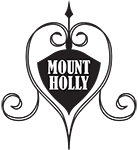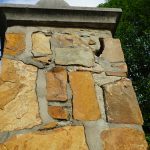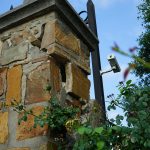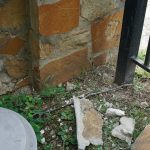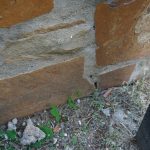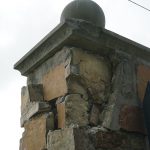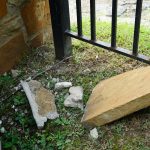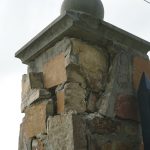Contributed by Joe Fox, State Forester, Arkansas Department of Agriculture. Photo by Joe Fox
The elegant White Oak (Quercus alba) in the southeast quadrant of Mount Holly was already there when the cemetery was established in 1843. Today, it is believed to be the only tree remaining on the grounds that predates the cemetery. Most trees at Mount Holly were planted fifty to 150 years ago, and only a few species of these are native to the site.
Foresters have estimated that this impressive tree is more than 200 years old, and it could possibly live for another hundred years. Its diameter breast high (DBH) is close to five feet. It has been able to grow many years without competition, much like a tree in a pasture. It should be beautiful this fall!
The combination of subzero weather in the winter of 2021, the big rains of last spring and early summer, and the mini-drought in September 2021 led some hardwoods around the state to turn brown or half brown early in the fall, while others seem unfazed. Mount Holly appears to have avoided the drought reaction, and many trees in the cemetery gave us beautiful color in November.
The oak was sacred to the ancient Romans and Greeks, was part of Norse and Druid cultures, and has an important role in the Christian faith. Carvings of oak wood, acorns and leaves are easy to find on grave markers in Mount Holly and other older cemeteries. Perhaps the easiest to spot are Christian crosses of stone carved to resemble oak, as Christ’s cross is widely thought to have been made of oak.

